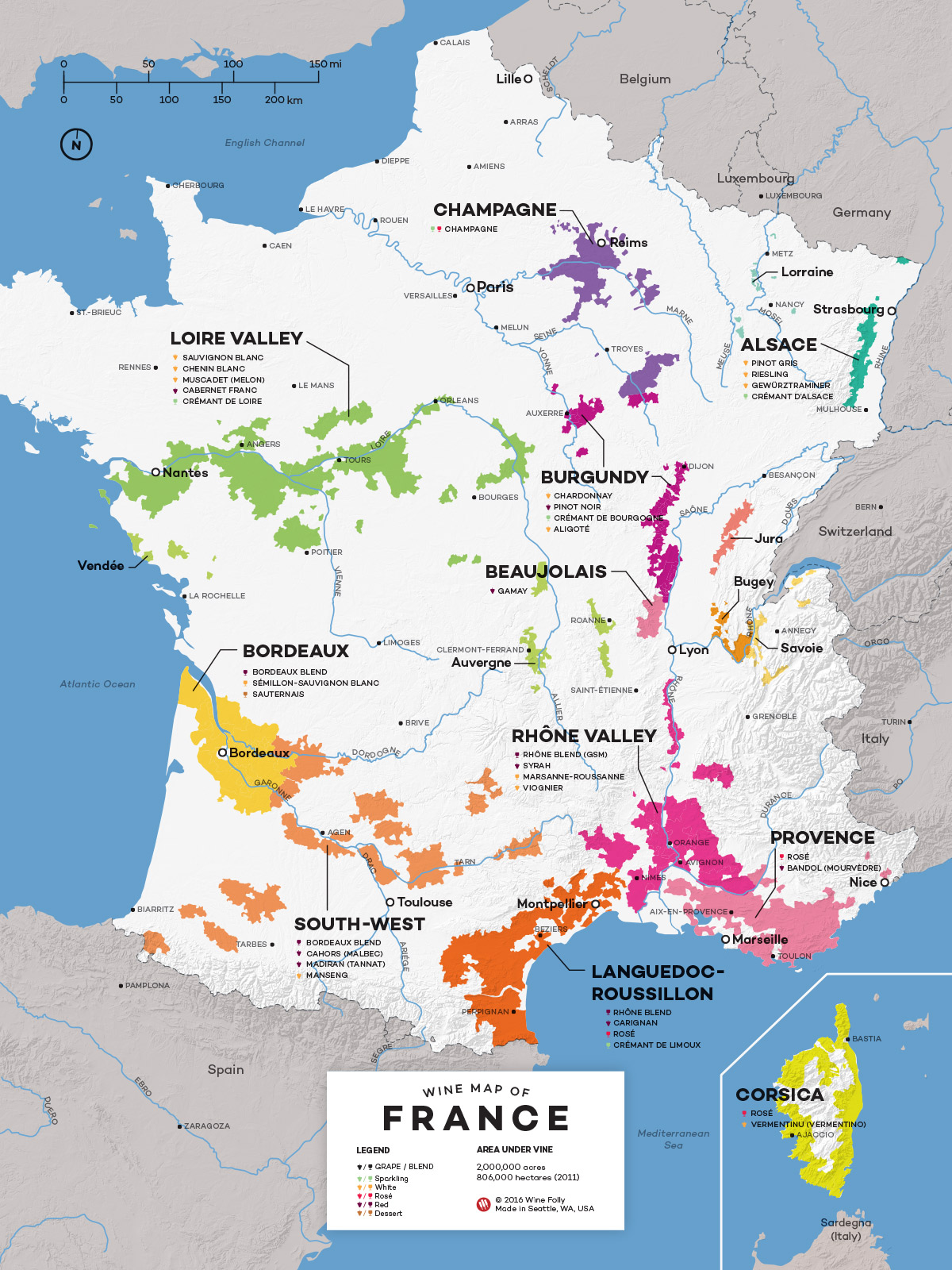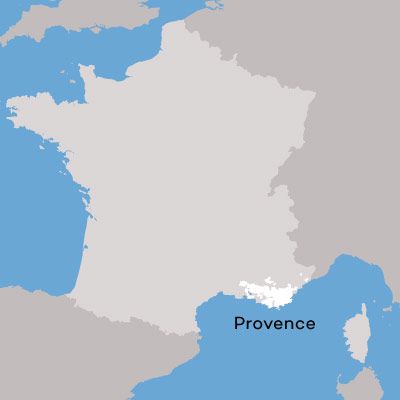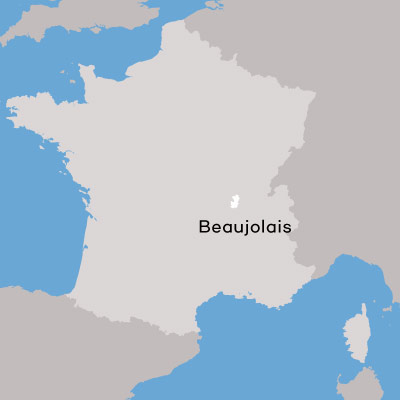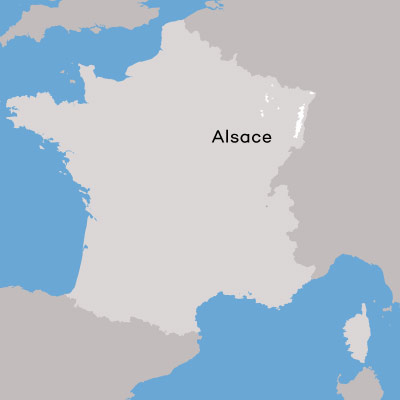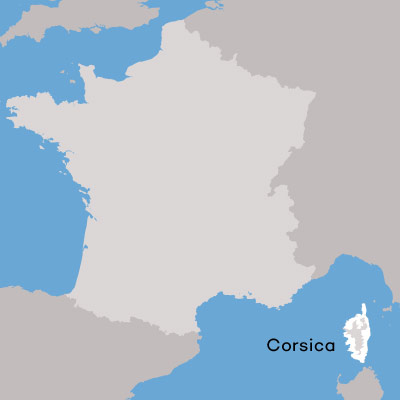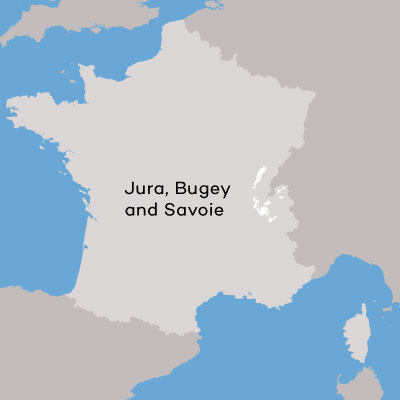Starting your adventure into French wine reveals a nearly endless selection of new wines to try.
For starters, there are over 200 indigenous wine varieties–from the well-known Chardonnay and Cabernet Sauvignon to very rare grapes like Prunelard and Savagnin.
Moreover, there are 307 official wine label names (called AOP or Appellation d’Origine Protégée). Each designation can allow several different types of wine (red, rosé, sparkling, etc.).
So, when you put it all into perspective, France delivers approximately 2,900 different wines, not taking into account the many thousands of wineries.
French Wine Exploration Map
If you drank a new wine each night, it would take 8 years to drink your way through France.
As complicated as it is, anyone can jumpstart their French wine knowledge by tasting the most emblematic wines of the 11 major regions.
Try one of the 34 wines each week and you’ll become confident with French wines–just be sure to take good notes!
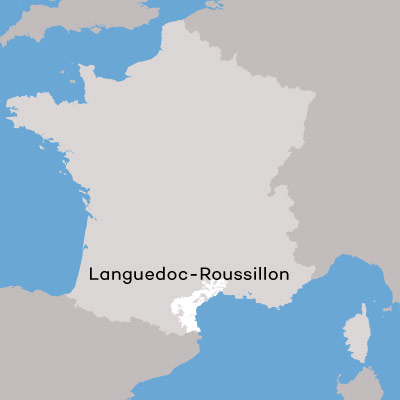
Languedoc-Roussillon
523,852 acres / 212,000 hectares
Grenache Blend: The Languedoc-Roussillon regions excel at blended red wines, which include varieties like Grenache, Syrah, Mourvèdre and Carignan. Imagine bold red raspberry, licorice, and grilled plum with a somewhat herbal oregano kick. Wines labeled with Corbières, Saint-Chinian, Fitou, Côtes du Roussillon Villages and Collioure are all great examples of Languedoc-Roussillon red blends.
Sparkling Limoux: The sparkling wine region of Limoux is said to have been the original inspiration for Champagne! You’ll find Crémant de Limoux commonly uses Chardonnay for a lean, dry “brut” style, while Blanquette de Limoux depends on Mauzac, a regional grape, for baked apple notes.
Carignan: One of the most underrated red grapes of the Languedoc-Roussillon, Carignan offers up notes of dried cranberry, raspberry, licorice, and cured meats. Look for old vine (“vieilles vignes”) Carignan from Côtes Catalanes, Faugères, and Minervois.
Fortified Sweet Red Wine: A succulent sweet wine bursting with raspberry, cinnamon, and caramel notes. These wines have been known to age for 100+ years. Look for Banyuls and Maury.
Bordeaux
278,754 acres / 112,810 hectares
Left Bank Red Bordeaux: A bold, dry red using Cabernet Sauvignon and Merlot in the blend, with flavors of black currant, graphic, mint, and gravelly-tobacco notes. This is a more rustic style of Cab-Merlot (compared to Napa Valley) that’s known to age well for 20+ years. Look for wines from the appellations in the Médoc including Saint-Estèphe, Saint-Julien, Listrac, and Margaux.
Right Bank Red Bordeaux: A slightly softer, rustic red made with mostly Merlot and Cabernet Franc, with flavors of black cherry, tobacco, and mint. Look for wines from Pomerol, Saint-Émilion, and Fronsac.
White Bordeaux: Less the 10% of the region’s production is dedicated to White Bordeaux which is a zippy blend of Sauvignon Blanc and Sémillon. Wines offer up pink grapefruit, green melon, and beeswax notes. Entre-Deux-Mers and Pessac-Léognan offer great examples.
Sauternais (sweet whites): An intensely sweet white wine (perfect for dessert or pairing with Foie Gras). The Sauternais appellations include Sauternes, Barsac, Cérons, and Cadillac among others.
Read more about wines of Bordeaux in this detailed guide.
Rhône Valley
175,475 acres / 71,014 hectares
Syrah: There are 2 major areas in the Rhône Valley and the smaller region that runs along the Rhône river is where you’ll find Syrah. Northern Rhône Syrah offers a much more savory profile with notes of black olive, plum, and dried green herbs. Look for St. Joseph and Crozes-Hermitage.
Grenache-Syrah Blend: The Southern Rhône is famous for its blends of primarily Grenache, Syrah, and Mourvèdre. Wines exude ripe raspberry, plum and dried lavender with a smoky overtone. The Côtes du Rhône Villages, including Vinsobres, Vacqueyras, Gigondas, and Rasteau, are all quite worthy. The most sought after wineries are mostly found in the sub-region of Châteauneuf-du-Pape.
Marsanne Blend (white): A very small percentage of the Southern Côtes du Rhône area is dedicated to white wines, made with the regional varieties of Marsanne and Roussanne. This bolder white is the gestalt of fine Chardonnay with notes of lemon, beeswax, and apricot.
Loire Valley
161,561 acres / 65,383 hectares
Sauvignon Blanc: A lean and herbal style of Sauvignon Blanc with flavors of thyme, lime peel, honeydew melon, and grass. Wines are labeled Sancerre, Pouilly-Fumé, Touraine, Reuilly, Quincy and Cheverny (for classic 100% Sauvignon Blanc).
Chenin Blanc: In the middle Loire Valley is where you’ll find awesome Chenin Blanc wines that range in style from dry to sweet and still to sparkling. Flavors range from delicate notes of flowers and apricots from Vouvray and Montlouis-sur-Loire, to rich applesauce-like flavors from aged Savennières.
Muscadet (white): The perfect white for shellfish, clams, and mussels hailing from the western maritime region of Nantes in the Loire. Wines are bone-dry with subtle notes of sea shell, lime, green apple, and pear skin. Muscadet Sèvre et Maine is the most popular appellation for Muscadet.
Cabernet Franc: A very herbaceous and rustic style of Cabernet Franc with spicy notes of bell pepper, tart red cherry, and gravelly minerality. Look for wines labeled as Chinon and Bourgueil.
Read more about Wines of the Loire Valley in this detailed guide.
South West
134,393 acres / 50,341 hectares
Malbec: Despite the region’s large size, the wines of South West are still being discovered outside of France. One notable find is Cahors, which is the origin place of Malbec. Wines are medium-bodied with notes of cherries and plums, with softer tannins and subtle notes of dried leaves.
Colombard, Ugni Blanc, and Gros Manseng blends: A great value white wine to seek out from the South West includes the grapes of Colombard and Ugni Blanc. Whites offer juicy-but-crisp notes of green melon, lemongrass, and apple, with a long tingly finish. Seek out Gascogne Blanc.
Tannat: A rare wine with exceptionally bold tannins that’s said to be the wine of longevity. Wines offer black currant, licorice, and smoke, with drying tannins. Seek out Irouleguy and Madiran.
Read more about wines of South West France in this detailed guide.
Provence
108,051 acres / 43,728 hectares
Rosé: The most productive region for rosé in all of France (if not the world), Provence delivers boatloads of delicate, onion-skin colored dry rosé wines with notes of strawberry, watermelon, and crunchy celery. Check out Côtes de Provence for great quality.
Mourvèdre: The tiny region of Bandol produces a deeply black red wine with notes of black plum, roasted meats, and Provençal herbs. Wines easily age for 10–20 years.
Read more about Provence wine in this detailed guide.
Champagne
83,792 acres / 33,910 hectares
Sparkling Blanc de Blancs: Blanc de Blancs or “white of whites” is made with 100% Chardonnay grown in Champagne. Wines offer apple, lemon, and beeswax notes with crisp acidity and creamy bubbles.
Sparkling Blanc de Noirs: Made with the two red grapes of Champagne (Pinot Meunier and Pinot Noir), Blanc de Noirs or “white of blacks” produces wines with more body and notes of white cherry, mushroom, lemon, and raspberry.
Bourgogne
69,203 acres / 28,006 hectares
Pinot Noir: The origin place of Pinot Noir produces a rustic and bold style of Pinot Noir with notes of cranberry, hibiscus, rose hip, and a dusting of earthy herbs. Bourgogne Rouge is a great place to start, but you can find greater quality from the Bourgogne Villages.
Oaked Chardonnay: The origin place of Chardonnay produces the richest styles from the regions in the Côte de Beaune. Read more about white Burgundy.
Unoaked Chardonnay: A lean style of Chardonnay with notes of quince, starfruit and sometimes passion fruit. Most notably you’ll find this style from Chablis, but Pouilly-Fuisse and the regions in Màcon also do a great job.
Beaujolais
50,112 acres / 20,280 hectares
Gamay: A region devoted to a single variety (Gamay) that offers seductive aromas of plum, cherry, violet, and peony. The region produces a ton of Beaujolais Nouveau, but the best wines to seek out are from one of the 10 Beaujolais Crus.
Alsace
33,978 acres / 16,179 hectares
Riesling: A dry style of Riesling that is quite refreshing as it is haunting with its sometimes smoky aromas. All 51 Grand Cru vineyards specialize in this grape.
Pinot Gris: A sweeter style of Pinot Gris that explodes with apricots, limes, and honeyed richness.
Gewürztraminer: One of the most aromatic wines on the planet with notes of rose water, lychee, and perfume. Wines are richer in style, taste just off-dry (although most are dry) and are best enjoyed within a year or two of release.
Sparkling Alsace: Crémant d’Alsace is made in 2 styles, a white made with mostly Pinot Gris and Pinot Blanc which gives it a sweetish apricot kick and a rosé style made with 100% Pinot Noir that offers raspberry and cherry notes with creamy bubble finesse.
Corsica
15,115 acres / 6,117 hectares
Nielluccio (aka Sangiovese): A wonderful wine to find in rosé form where it produces a richer style of rosé that explodes with deep raspberry flavors. Look for wines blended with the rare local grape, Sciaccarellu.
Vermentino: A richer, herbal white wine that is often reminiscent of Sauvignon Blanc with a juicier more smoky presence.
Bugey, Jura and Savoie
10,748 acres / 4,350 hectares
Sparkling Red: Bugey Cerdon is a fruity blend of Pinot Noir and Gamay that whiffs of cranberries, cherries, and roses.
Vin Jaune: Hailing from the Jura region, Vin Jaune is an oxidative white wine unlike any other, with subtle notes of pears, nuts, and gravelly spicy notes. Chateau Chalon is a region dedicated to 100% Vin Jaune wines.
Vin de Savoie: The Savoie region is quite alpine and makes lean whites and juicy tart reds under the Vin de Savoie appellation. One of the best-least-talked-about wines from Savoie uses the regional base wines to make vermouth in Chambéry.
Get the Map
A 12×16 inch reference map to France’s major wines and regions printed on spill and tear resistant paper.
